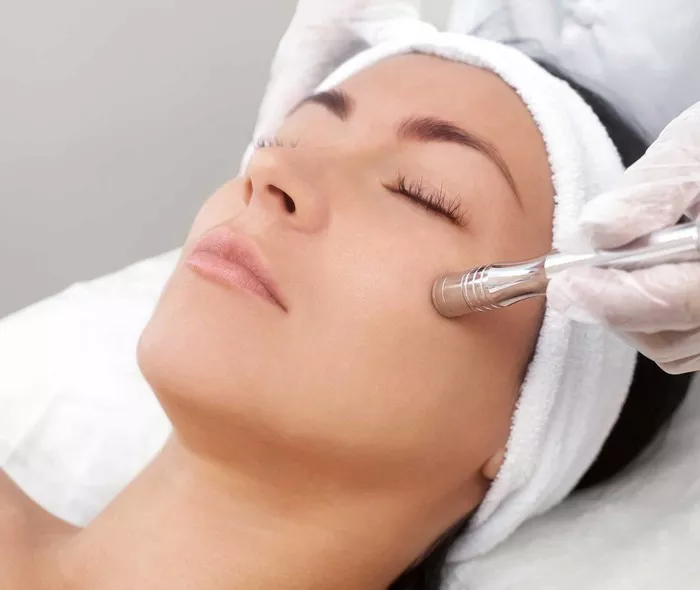Sagging skin is a common concern that many individuals face as they age. Factors such as genetics, sun exposure, and the natural aging process can lead to a loss of skin elasticity, resulting in saggy or drooping skin. Microdermabrasion is a popular non-invasive cosmetic procedure that is often touted for its ability to improve skin texture and appearance. But can it truly help with sagging skin? In this article, we will explore the ins and outs of microdermabrasion and its effectiveness in addressing sagging skin.
Understanding Microdermabrasion
Microdermabrasion is a non-surgical exfoliating procedure that aims to rejuvenate the skin’s appearance. It involves the use of a specialized device that propels tiny, abrasive crystals or a diamond-tipped wand onto the skin’s surface. These abrasive particles gently remove the outer layer of dead skin cells, revealing smoother, fresher skin underneath. The procedure is typically performed on the face, neck, chest, or hands and can help with various skin concerns, including:
Exfoliation: Microdermabrasion effectively removes dead skin cells, promoting cell turnover and a brighter complexion.
Acne and Acne Scars: It can improve the appearance of mild acne scars and reduce acne breakouts.
Fine Lines and Wrinkles: Microdermabrasion can help reduce the visibility of fine lines and wrinkles, particularly those caused by sun damage.
Uneven Skin Tone: It can address issues like hyperpigmentation and uneven skin tone by promoting the growth of new, healthier skin cells.
Clogged Pores: The procedure can help unclog and minimize the appearance of enlarged pores.
Mild Sun Damage: Microdermabrasion can improve the texture and tone of skin affected by mild sun damage.
Can Microdermabrasion Help with Sagging Skin?
While microdermabrasion offers several benefits for skin rejuvenation, it has limitations when it comes to addressing sagging skin. Here’s why:
Depth of Treatment: Microdermabrasion primarily targets the outermost layer of the skin, known as the stratum corneum. It does not penetrate deep enough to reach the collagen and elastin fibers that provide structural support to the skin. Sagging skin is primarily a result of the breakdown and loss of these fibers, which cannot be effectively addressed by microdermabrasion alone.
Lack of Skin Tightening: Microdermabrasion focuses on exfoliation and improving skin texture but does not have the capability to tighten loose or sagging skin. Procedures like facelifts or non-surgical skin tightening treatments (e.g., Ultherapy or radiofrequency devices) are more appropriate for addressing sagging skin concerns.
Temporary Effects: While microdermabrasion can leave the skin looking refreshed and rejuvenated temporarily, the results are not long-lasting. Multiple sessions may be required to maintain the desired appearance, but it still does not provide significant skin tightening.
Combining Microdermabrasion with Other Treatments
While microdermabrasion alone may not be the ideal solution for sagging skin, it can be used in conjunction with other treatments to achieve a more comprehensive facial rejuvenation. Some options to consider include:
Dermal Fillers: Injectable dermal fillers can add volume to the face, helping to lift and smooth sagging skin in specific areas. Combining microdermabrasion with dermal fillers can yield more satisfying results.
Botox or Dysport: Neurotoxin injections can relax facial muscles, reducing the appearance of fine lines and wrinkles. When used in combination with microdermabrasion, they can complement each other for a more youthful look.
Ultherapy: Ultherapy is an FDA-approved non-invasive procedure that uses ultrasound technology to stimulate collagen production and tighten loose skin. It is often used alongside microdermabrasion to address sagging skin concerns effectively.
Surgical Procedures: For significant sagging skin issues, surgical procedures such as facelifts or neck lifts may be the most appropriate options. Microdermabrasion can still play a role in maintaining healthy skin and optimizing surgical results.
Conclusion
Microdermabrasion is a valuable cosmetic procedure for improving skin texture, reducing fine lines, and addressing various skin concerns. However, it is not a solution for sagging skin, as it does not have the capacity to tighten or lift the deeper layers of the skin where the structural support resides. Individuals seeking to address sagging skin should consult with a board-certified plastic surgeon or dermatologist to explore more appropriate treatment options, which may include surgical or non-surgical approaches tailored to their specific needs and goals. While microdermabrasion can enhance the overall quality of the skin, it should be considered as part of a comprehensive skin care regimen rather than a standalone solution for sagging skin.


